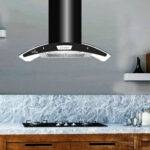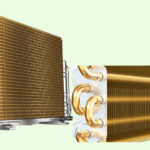Types of Refrigerants Used In Air Conditioning – Complete Study

The science of refrigeration has had a long and interesting journey. From ice harvesting in ancient China in 1000 BC to commercial cooling in present times, whole civilizations and generations of scientists have endeavored to achieve and master artificial cooling by manipulating matter and energy.
One of the key things of refrigeration is the refrigerant, also known as coolant, which is a chemical compound or mixture that changes form from liquid to gas and back to liquid to lower the temperature of a space, substance or system. This article is about the evolution of refrigerants and their applications at different times in recorded history.
History of refrigerants
Millennia ago, farming communities in Central Asia harvested ice to preserve food in ice-storehouses and iceboxes. With the passage of time, refrigeration techniques underwent a sea change, and by the year 1755, William Cullen, a Scottish Professor, developed a small refrigerating machine using diethyl ether as a refrigerant.
In 1755, Benjamin Franklin and John Hadley demonstrated that evaporation of volatile compounds like ether and alcohol could lower the temperature of an object beyond the freezing point of water. By the turn of the century in 1805, Oliver Evans, an American inventor, showed how ice could be formed by a closed vapor-compression refrigeration cycle using ether as a refrigerant.
In 1820, notable English physicist Michael Faraday successfully converted gaseous ammonia to liquid by applying high pressure to the gas and lowering its temperature. In 1842, American physician John Gorrie developed a system that froze water to produce ice for indoor cooling. In 1859, French scientist Ferdinand Philippe Edouard Carré created the first gas-absorption refrigeration system that used gaseous ammonia as a coolant.
A decade later in the 1860s and 70s, Carl von Linde, a German professor of engineering, began exploring different applications of refrigerants like ammonia, sulphur dioxide and methyl chloride.
Since then, many more inventions and discoveries have been made in the field of refrigeration and air cooling to create more practical systems and safer refrigerants. Today, we have HVAC (heating, ventilation and air conditioning) systems in a mind-boggling array of designs. Let us take a look at the developments in this industry with respect to refrigerants in the last century.
Chlorofluorocarbon (CFC) and hydrochlorofluorocarbon (HCFC)
In the early and mid 20th century, two very important groups of compounds emerged as leading refrigerants in refrigeration and air conditioning. These were chlorofluorocarbons and hydrochlorofluorocarbons, and they completely dominated the HVAC industry.
CFCs and HCFCs are a group of fully or partially halogenated paraffin hydrocarbons. They were commonly known as Freons together with other fluorinated aliphatic organic compounds. Freon is a family of colorless, odorless, non-corrosive, non-inflammable gases and liquids with low toxicity. They are stable, inert and slow to react with the environment. They may contain fluorine, chlorine, carbon, hydrogen and bromide in various combinations. Freon is a registered trademark of E.I. du Pont de Nemours & Company.
Historically, the most widely used CFC is dichlorodifluoromethane (a CFC), also known as R-12 or Freon-12, while the most widely used HCFC is chlorodifluoromethane (an HCFC), also known as R-22 or HCFC-22. Other common CFC refrigerants include R11, R13, R113, R114, R500, R502, and R503, and common HCFC refrigerants include R123, R124, R401A, R401B, R402A, R403B, R408A, R409A, R414B, and R416A.
Ozone Depletion and Montreal Protocol
In the 1970s and 80s scientists began researching a possible connection between Freons and the depletion of the ozone layer. A massive hole was discovered around this time in the ozone layer over the Antarctic which led researchers around the world to converge to find a possible cause. In the end, it was found that that CFCs and HCFCs released from old and broken-down air conditioners and refrigerators were responsible for the catastrophe.
Scientists attributed the reason to the low reactivity of CFCs which gave them an inordinately long lifespan of more than 100 years, which was enough time for them to float up to the upper atmosphere and trigger a chain reaction in the presence of UV rays, ultimately resulting in the destruction of the ozone layer.
This discovery turned out to be an eye-opener for the international community and became a cornerstone for future environmental laws and regulations. Most notably, it led to the signing of the Montreal Protocol in 1987 which vowed to phase out CFCs and HCFCs, and switch to more environment-friendly refrigerants.
At the time, the agreement was signed by 46 countries, but today we have all 197 countries of the world as signatories. This makes the agreement the first UN treaty to achieve universal ratification. The Montreal Agreement declared CFCs and HCFCs to be Ozone Depleting Substances (ODS) with high Ozone Depletion Potential (ODP). It was decided to phase them out in a planned manner over the next couple of decades.
However, as of the publication of this article, only a few developed countries have been successful in enforcing a complete ban on the compounds. Most countries are still dependant on them, although their phasing out process has begun and their use is strictly regulated.
Add Your Heading Text Here
With the discontinuation of R-12 and R-22, chlorine-free compounds like hydrofluorocarbons or HFCs emerged as a practical alternative. The good thing about HFCs is that they have zero ODP and their cooling properties are better than HCFCs. The leading HFC to replace R-22 was R-410A, also sometimes known as Puron. R-410A is completely chlorine-free. It is a mixture of two HFC refrigerants, R-125 and R-32. It is less reactive with the environment, and hence, safer and cleaner.
On 1st January, 2010, the Environmental Protection Agency (EPA) put a ban on the production and import of R-22 in the United States. Consequently, manufacturers of HVAC systems had to remodel their machines to work with R-410A. Apart from R-410A, the HFC group has refrigerants like R23, R134a, R404A, R407C, R417A, R422A, R422B, R422D, R507, and R508B, all of which have different applications.
However, even HFCs are not fully safe. They have a moderate Global Warming Potential (GWP) which has a negative impact on climate change. In view of these findings, in the October 2016 meeting in Rwanda, the Montreal Protocol was amended and the new Kigali Agreement was signed which proposed to phase out R-410A starting in the 2020s.
As of now, the most notable candidate to replace R-410A is R-32, a pure single-component coolant which has a third of the GWP of R-410A. In the US, some manufacturers have already started using R-32, although proper regulations are yet to be drawn up for its production, import and use.
Apart from R-32, industries are experimenting with hydrocarbons as a less environmentally-damaging coolant. The most promising compounds in this category are Propane, also called R-290, and Iso-Butane, also called R-600A. These are completely halogen-free and have zero ODP and negligible GWP. Their use is picking up fast, thanks to the growing drive towards sustainable living. We can hope to see many more innovations in the future using Propane and Iso-Butane. The only catch is, they are highly inflammable, and hence, require mandatory bullet-proof safety measures.
The following table shows the ODP and the GWP of key refrigerants.
| Refrigerant | Ozone Depletion Potential (ODP) | ODP Band | Global Warming Potential (GWP) | GWP Band |
| R-12 | 1 | High | 10900 | High |
| R-22 | 0.055 | Medium | 1810 | Medium |
| R-410A | 0 | Zero | 2088 | Medium |
| R-32 | 0 | Zero | 675 | Medium |
| R-134A | 0 | Zero | 1430 | Medium |
| R-290 | 0 | Zero | 3 | Low |
| R-600A | 0 | Zero | 3 | Low |
Source: http://www.linde-gas.com
In India, CFCs have almost been discontinued, although HCFCs and HFCs are still widely used. The government plans to phase out HCFCs completely by 2030 and reduce the use of HFCs by 85% by 2047 over the 2024-26 levels. Among the brands selling air conditioners in India, Godrej is perhaps the only one to uses R-290 as a refrigerant. The company’s NXW Series of energy-efficient air conditioners run on R-290, making them the greenest and cleanest air conditioners in the market.


